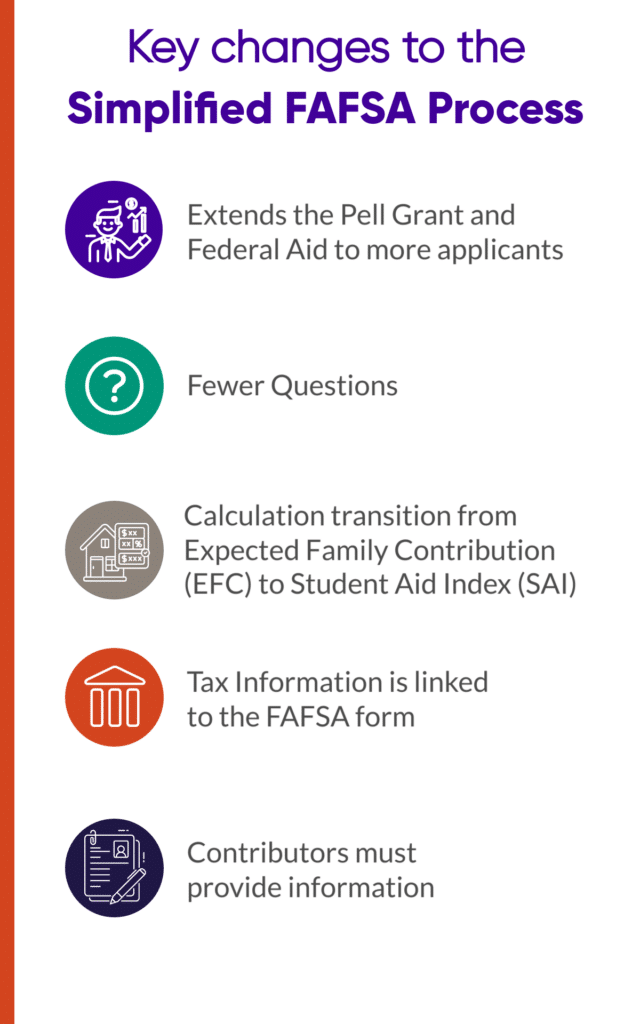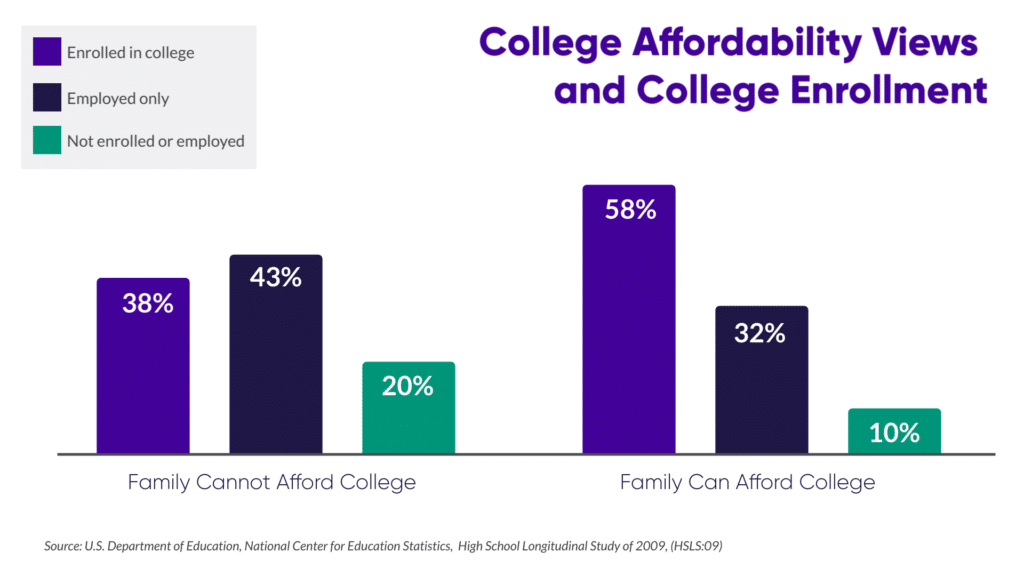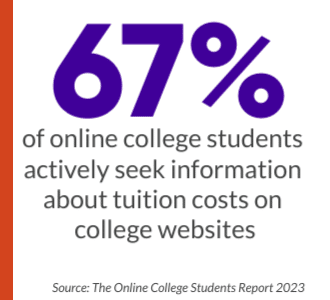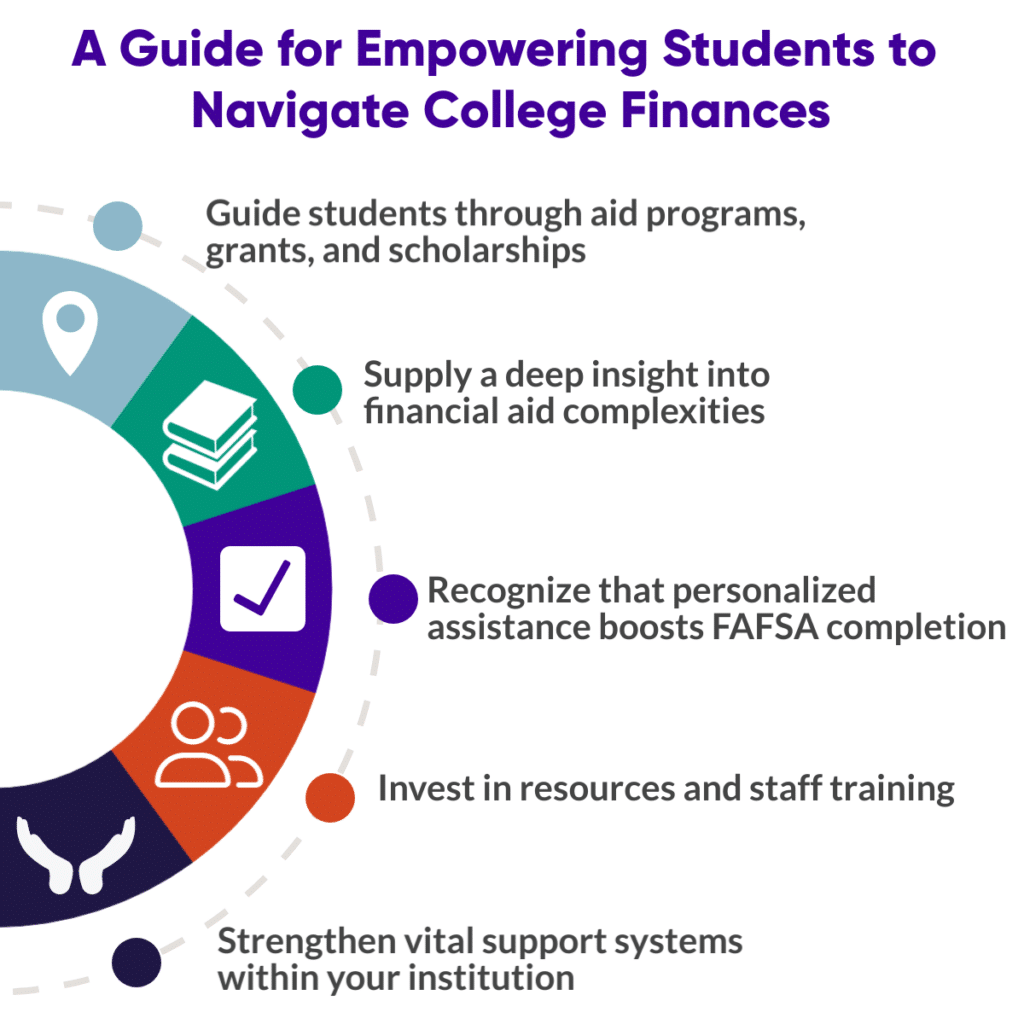The “Simplified” FAFSA: Are We Leaving Students Behind?

The New FAFSA Form and Its Effects on Financial Aid
We’re more than halfway through January 2024, and millions of students are filling out their Free Application for Federal Student Aid (FAFSA) form for the 2024-2025 school year. This month represents the soft launch of the form after implementing the FAFSA Simplification Act. The FAFSA Simplification Act led to significant changes in the FAFSA form, including fewer questions, a direct data exchange with the IRS, and a new formula that could impact the amount of financial aid that is awarded to students.
As indicated by the name, the overarching goal was to simplify the form, enhance the user experience, and extend federal student aid, including Pell Grants, to a more significant number of students from low-income backgrounds. With a litany of technical glitches and a 3-month delay, the launch of the new FAFSA could only be described as “clunky” and “challenging.” These form issues disrupted college decisions for many students and ironically were met with confusion and frustration in the application process.
Despite its intention to simplify the financial aid application process, its implementation needs to be clarified, and the significant redesign of the form has led to challenges for students and families, potentially undermining the initial goal of simplification.
The Flawed “Simplification”
While the FAFSA Simplification Act may have aimed to streamline the financial aid process, it has faced criticism for its flawed simplification.
Here is a list of changes that make the process flawed:

1. Some Contributors have been unable to complete the verification process
The arrival of the term “contributor” on the FAFSA form marks a shift in student aid application eligibility. While not financially responsible for college costs, individuals like biological parents, adoptive parents, stepparents, or even a student’s spouse can now directly impact financial aid awards through their information on the form.
However, implementing this new role is experiencing significant growing pains. While these challenges are not universal, many contributors have expressed not receiving the crucial invitation to create StudentAid.gov accounts, leaving them limbo. Even for those who’ve received the link, portal disconnections from the student’s application further complicate the process.
Confusion around who is responsible for FAFSA completion remains rampant, leaving some students needing more support and vital financial aid.
2. Families will no longer get a break for simultaneously having multiple children in college
The FAFSA simplification act changes how family finances are assessed for financial aid eligibility, notably eliminating the long-standing ‘sibling discount’ and potentially affecting families with multiple children pursuing higher education simultaneously.
Previously, a family’s Expected Family Contribution (EFC) was divided among dependent children, reducing the individual EFC for each child. The new method, the Student Aid Index (SAI), doesn’t consider sibling enrollment, calculating each child’s EFC independently based on the family’s overall financial picture.
While aiming for fairness and consistency, this change may reduce financial aid awards for students with siblings in college, especially at moderate income levels. Approximately 7.01 million U.S. families with three or more dependent children could be affected.
Despite the streamlined formula’s goal of enhancing transparency and efficiency in financial aid assessment, concerns arise about fair access for families with multiple children pursuing college simultaneously. The ultimate objective is to ensure that all students, including those with numerous college-bound siblings, receive adequate support in their academic pursuits.
3. The FAFSA form will directly transfer student and contributor federal tax data
While the intention was to make the FAFSA easier, it introduced unexpected challenges, particularly impacting students from disadvantaged backgrounds. The new practice of linking tax information to the FAFSA form has brought attention to some unexpected obstacles, particularly for low-income and first-generation students.
These difficulties include complicated questions, difficulty in locating required tax documents, changes in income, and problems related to citizenship status.
Students with parents needing Social Security Numbers (SSNs) or Individual Taxpayer Identification Numbers (ITINs) need help starting the financial aid process due to identity verification challenges. Even those with the proper documents struggle with creating accounts and submitting tax info, closing the door to helpful aid.
Low-income and first-generation students, already navigating unfamiliar financial aid systems, face more challenges. They need family guidance and knowledge, putting them at a disadvantage compared to better-prepared peers.
Price and financial aid are significant obstacles to vulnerable populations’ access to higher education. This perception – the belief that “college is simply out of reach” – often acts as a self-fulfilling prophecy, discouraging students from completing the FAFSA form. A disheartening reality remains: Of students who did not think they could afford college only 38% enrolled, vs 58% for those who did think they could afford college.

Colleges and universities are aware of these challenges and are actively taking steps to enhance financial aid accessibility by providing proactive support to applicants.
The Flawed Assumption of “Independence”
Navigating the landscape of financial aid, even before the upcoming changes in the FAFSA formula, poses inherent hurdles for students. There are a few reasons:
1. Not Knowing About Aid Options:
Many students need help with the first hurdle: sheer unfamiliarity with the financial aid landscape. A staggering 67% of online college students actively seek information about tuition costs on college websites, highlighting the widespread concern and demand for clarity in this area. Scholarships, grants, and work-study programs provide various opportunities. However, their availability might need clarification due to a need for more awareness. Without clear guidance and readily accessible information, students may miss out on crucial resources that could ease their financial burden.
2. Complicated Paperwork:
FAFSA forms, tax documents, income verification – the sheer volume and intricate details can overwhelm even the most organized individual. Students, especially those juggling academic demands and extracurricular commitments, may feel discouraged and abandon the process altogether.
3. Uncertain Timelines:
Students often need help with when they’ll get the money they need. Not knowing when aid will come through can create stress and make it hard for students to plan their finances

4. Unequal Access to Resources:
The struggle for financial aid differs. Students from underserved communities often face additional hurdles due to limited access to information, guidance counselors with limited expertise in financial assistance, and unreliable internet connectivity that impedes online resources. This disparity adds another layer of complexity to an already intricate process.
5. Confusing Aid Sources:
It can still be challenging after getting financial aid. Figuring out how different scholarships, grants, and loans work together is like solving a puzzle. Managing repayment schedules, knowing about grace periods, and understanding potential tax implications need financial literacy skills. Many students still need to develop these skills

Assist students in navigating college financing by leveraging your expertise as financial aid officers, advisors, and directors. You are pivotal in guiding students through aid programs, grants, and scholarships, offering crucial support beyond paperwork processing. Provide comprehensive assistance for students to understand education costs, navigate application processes, and unravel the complexities of grants, loans, and scholarships.
Beyond mere form distribution, act as trusted advisors by clarifying eligibility requirements and explaining repayment schedules. Recognize that your personalized assistance significantly increases students’ likelihood of completing their FAFSA forms, enhancing their access to essential financial aid and contributing to academic success.
As financial aid professionals, acknowledge the importance of your roles and continuously invest in resources, staff training, and accessibility. Ensure that all students receive the guidance needed to navigate the financial complexities of higher education. Strengthen these vital support systems within your institutions to illuminate the path to educational goals for numerous students, ensuring that financial obstacles do not hinder their academic aspirations.
A Call to Action for Higher Ed Leaders
Navigating financial aid can be overwhelming for students in higher education. It’s vital to stress the importance of hands-on support and one-on-one guidance in this process. This robust support empowers students and ensures they complete FAFSA documents accurately and on time.
When students feel supported and informed, they are more likely to participate actively in the financial aid process. Supporting students by addressing barriers such as lack of awareness, understanding of eligibility requirements, and the form’s complexity helps students complete the FAFSA.
For retention strategies to have a meaningful impact, students must complete the FAFSA to reduce the economic barriers hindering their enrollment in a program. Completing the FAFSA is a foundational step in providing the necessary resources to address academic and financial barriers that students may encounter.
Recommendations
Many new college students face the challenge of financing their education after the initial excitement of acceptance. Navigating the financial aid process, with its forms, deadlines, and jargon, can be overwhelming. However, it doesn’t have to be a journey of anxiety and confusion. Proactive institutions can provide students with the tools and guidance needed to navigate the financial aid process successfully. Your team can offer the following support:
- Proactive Outreach and Personalized Guidance:
Creating a dedicated team to help students from application to document submission is vital. This team offers valuable support throughout the financial aid process. - Financial Literacy Workshop and Resources:
Empower students with knowledge and confidence to effectively navigate the system by helping them differentiate between actual costs and awarded amounts. - Technology-Driven Solutions:
Streamline communication, document management, and data verification. Investing in user-friendly online platforms for communication, document management, and data verification can significantly impact student success.
Make Financial Aid a Standard Practice in Enrollment Conversations
The excitement of college acceptance can quickly collide with the anxieties of cost. For many new students, navigating price tags and financial aid options is a daunting, often unmentioned concern. Yet, proactive institutions can alleviate student stress and foster informed decision-making by prioritizing financial transparency from the beginning. Enrollment teams have a unique opportunity to address costs head-on, normalizing financial anxieties and empowering students to navigate their options confidently.
Whether a student broaches the topic or not, incorporating pricing and financial aid discussions as a standard practice into early conversations throughout your enrollment management funnel holds immense value.
This upfront transparency can alleviate uncertainty, build trust, and set realistic expectations, preventing late-stage surprises and potentially discouraging dropouts.
Internal resources are crucial, but recognizing the need for additional support during peak periods or with limited staff isn’t a sign of weakness; it’s a strategic move. Evaluating and partnering with an agency such as EducationDynamics can help alleviate the burden of internal resources while delivering a consistently high level of service for all students, regardless of team size. EducationDynamics stands ready to be your institution’s comprehensive partner, with the tools and expertise for effective financial aid coaching solutions.
Be sure to prioritize your students’ financial well-being. Re-evaluate your enrollment management funnel precisely to inject support around completing financial assistance.
Consider EDDY a valuable partner and schedule a free consultation today to explore how we can help your institution empower students through financial transparency, expert guidance, and personalized one-on-one support.